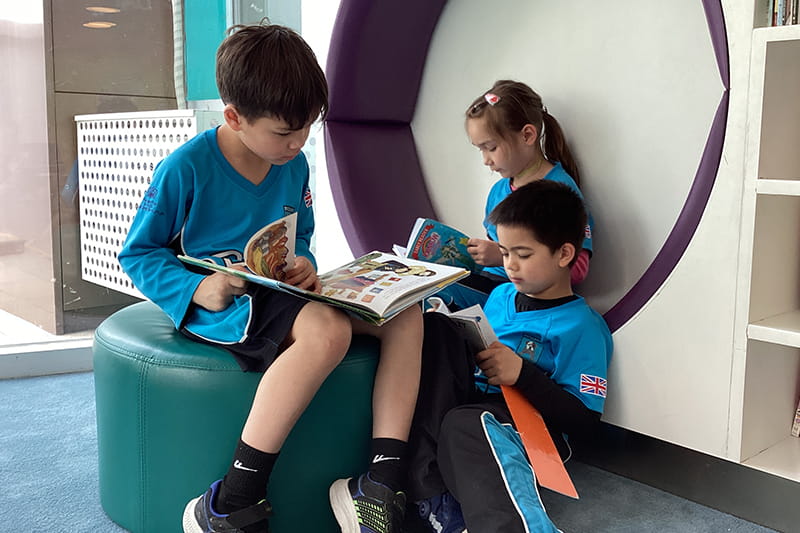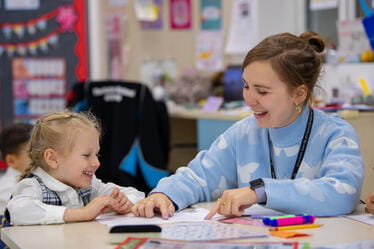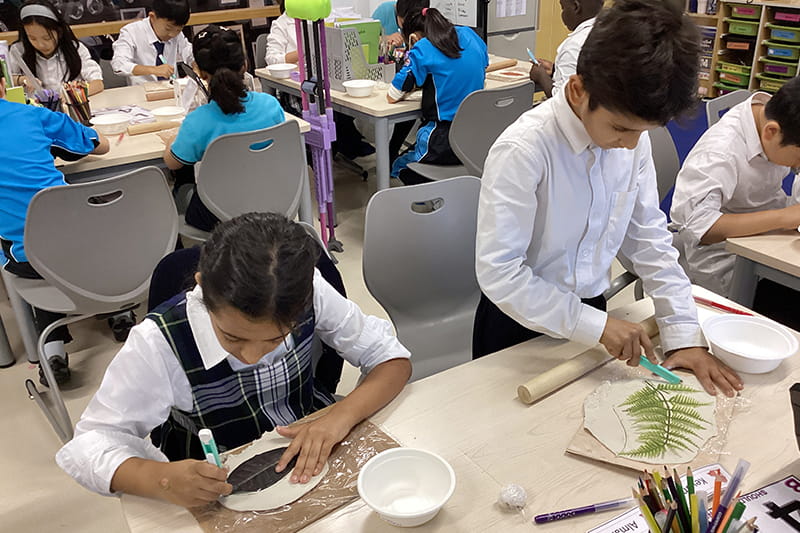A well-stocked and inviting library is one of the most valuable resources a primary school can offer and that’s exactly what we have at BSB Sanlitun. The role of libraries in education extends far beyond simply providing books; they serve as vibrant spaces that encourage exploration, creativity, and, most importantly, reading. For children in their formative years, having access to an engaging and well-curated library can significantly enhance their reading attainment and fuel their lifelong love for reading. Here's why every primary school needs a library that sparks curiosity and fosters a love for books.
1. Fostering a Lifelong Love of Reading
Children who are regularly exposed to books in an inviting library setting are more likely to develop a lifelong love of reading. A well-stocked library filled with diverse genres—ranging from picture books and fairy tales to informational texts and chapter books—captures a child’s imagination and opens doors to new worlds. When children can choose books that resonate with their interests, they are more likely to engage in reading for pleasure. This early connection with books can set the foundation for a positive relationship with reading that lasts far beyond their school years.
2. Building Strong Reading Skills
Reading is fundamental to a child's academic success. A well-stocked library provides ample opportunities for children to practise and improve their reading skills. Access to a wide range of books with varying levels of difficulty helps children develop fluency, comprehension, and vocabulary. The act of reading regularly strengthens their ability to decode words, understand sentence structures, and retain new information. Additionally, when students have the freedom to choose their reading materials, they are more likely to read more often, leading to steady improvement in their overall literacy skills.

3. Creating a Comfortable and Inspiring Reading Environment
An inviting library doesn’t just have books; it has a space that encourages children to read. Bright, cozy reading nooks, comfortable seating, and vibrant displays of books can turn a library into a destination that children eagerly look forward to visiting. The environment should feel safe and stimulating, sparking curiosity and offering children a comfortable space to explore their interests. When children feel at ease in a space dedicated to reading, they are more likely to spend time exploring the books, allowing them to form connections with stories and characters that deepen their love for reading.
4. Promoting Critical Thinking and Creativity
Books are powerful tools for fostering critical thinking. A well-stocked library with a variety of genres and topics exposes children to different perspectives, ideas, and cultures. Reading fiction develops empathy, as children are able to connect with characters and their experiences. Non-fiction texts, on the other hand, teach children about the world around them and promote analytical thinking. By encouraging children to ask questions and make connections, libraries foster intellectual curiosity and creativity—skills that are essential not only for reading but for all areas of learning.

5. Supporting Diverse Learning Styles and Needs
Every child learns differently, and a good library acknowledges this by offering a broad range of books that cater to various learning styles and needs. Some children might thrive with visual books, while others may benefit from audiobooks or interactive resources. Having these options ensures that every child has the opportunity to engage with reading in a way that best suits them. For students with reading difficulties, accessible books, such as those with larger print, braille, or multimedia support, can help bridge gaps and ensure they are not left behind in their reading journey.
6. Instilling Confidence and Independence
When children are given the freedom to choose their own reading materials, it builds their confidence and independence. Selecting books that spark their curiosity allows them to take ownership of their reading experience. This sense of agency is essential for developing a positive attitude toward reading. Additionally, reading books independently encourages children to take risks with unfamiliar words or ideas, gradually boosting their self-assurance and fluency. A library that encourages exploration empowers children to discover new authors, series, and genres on their own terms, fostering a sense of pride in their achievements.
7. Supporting Curriculum and Educational Goals
A well-curated library aligns with and enhances the school's curriculum. It can provide students with supplemental materials for various subjects, from science and history to mathematics and art. By providing resources that support the classroom learning, libraries reinforce academic concepts and offer children different ways to approach and understand what they are studying. This not only helps them in their academic journey but also provides them with a well-rounded education by broadening their knowledge beyond the textbook.

8. Encouraging Social Learning and Collaboration
Libraries also serve as communal spaces where students can interact with their peers. Group reading activities, book clubs, and author visits are just a few examples of how the library can facilitate collaborative learning. These social interactions help children build important communication skills, share their ideas, and discuss what they have read. Collaboration in the library encourages teamwork, critical discussion, and the exchange of ideas—skills that are beneficial both in and out of the classroom.
In summary, a well-stocked and inviting library is not just a place to store books—it is a cornerstone of a child's educational and personal development. The library can ignite a passion for reading, build essential literacy skills, create an inspiring environment for learning, and promote curiosity, creativity, and independence. In a world where digital distractions often compete for children's attention, a school library remains a powerful tool in ensuring that reading continues to play a central role in a child's growth and enjoyment. Ask your child to share their library book with you each week and enjoy it together at home!
By Emily Kingett
Year 2 Leader, Elephants Class Teacher









